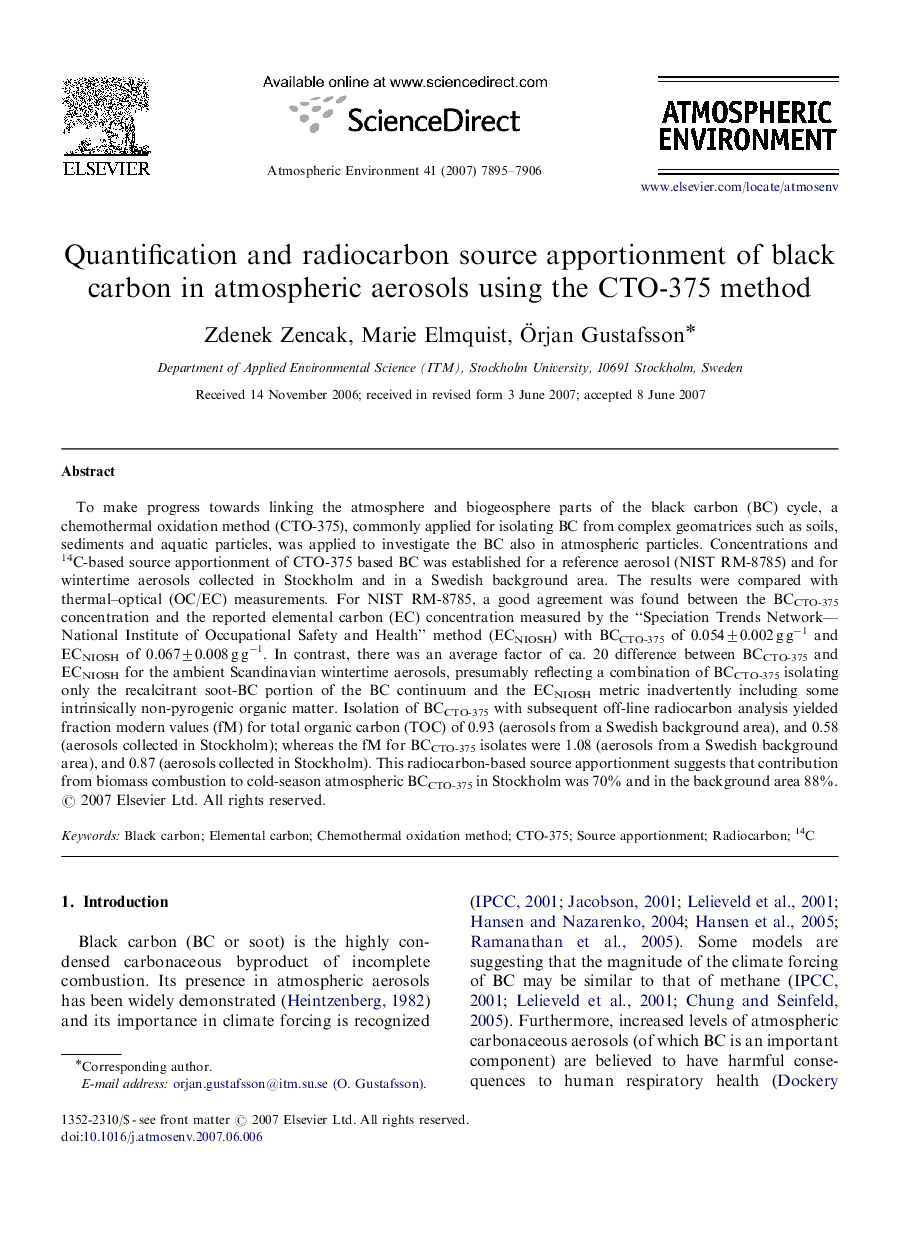| کد مقاله | کد نشریه | سال انتشار | مقاله انگلیسی | نسخه تمام متن |
|---|---|---|---|---|
| 4443117 | 1311179 | 2007 | 12 صفحه PDF | دانلود رایگان |

To make progress towards linking the atmosphere and biogeosphere parts of the black carbon (BC) cycle, a chemothermal oxidation method (CTO-375), commonly applied for isolating BC from complex geomatrices such as soils, sediments and aquatic particles, was applied to investigate the BC also in atmospheric particles. Concentrations and 14C-based source apportionment of CTO-375 based BC was established for a reference aerosol (NIST RM-8785) and for wintertime aerosols collected in Stockholm and in a Swedish background area. The results were compared with thermal–optical (OC/EC) measurements. For NIST RM-8785, a good agreement was found between the BCCTO-375 concentration and the reported elemental carbon (EC) concentration measured by the “Speciation Trends Network—National Institute of Occupational Safety and Health” method (ECNIOSH) with BCCTO-375 of 0.054±0.002 g g−1 and ECNIOSH of 0.067±0.008 g g−1. In contrast, there was an average factor of ca. 20 difference between BCCTO-375 and ECNIOSH for the ambient Scandinavian wintertime aerosols, presumably reflecting a combination of BCCTO-375 isolating only the recalcitrant soot-BC portion of the BC continuum and the ECNIOSH metric inadvertently including some intrinsically non-pyrogenic organic matter. Isolation of BCCTO-375 with subsequent off-line radiocarbon analysis yielded fraction modern values (fM) for total organic carbon (TOC) of 0.93 (aerosols from a Swedish background area), and 0.58 (aerosols collected in Stockholm); whereas the fM for BCCTO-375 isolates were 1.08 (aerosols from a Swedish background area), and 0.87 (aerosols collected in Stockholm). This radiocarbon-based source apportionment suggests that contribution from biomass combustion to cold-season atmospheric BCCTO-375 in Stockholm was 70% and in the background area 88%.
Journal: Atmospheric Environment - Volume 41, Issue 36, November 2007, Pages 7895–7906